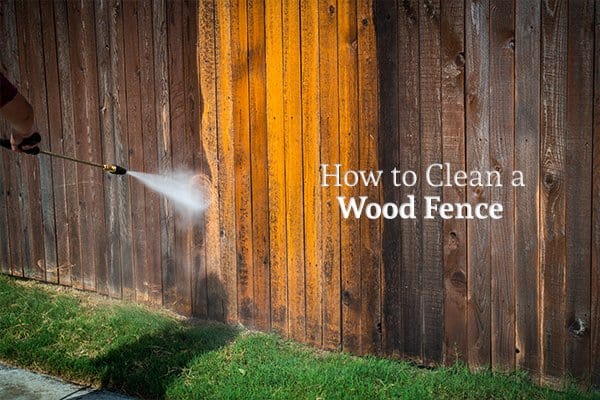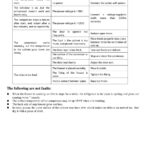To clean a wood fence with bleach, mix one part household bleach with two parts warm water to create a cleaning solution. Apply the solution to the fence with a brush or sprayer, let it sit for a few minutes, then rinse it off with a hose.
Bleach is effective at removing severe stains such as mold, mildew, hard water, and rust stains, and it can also help restore the fence’s original appearance. However, it’s important to cover any nearby plants and use caution when working with bleach, as it can be harmful to skin and eyes.
In this blog post, we’ll discuss the steps to clean a wood fence with bleach, as well as alternative methods for cleaning a fence without a power washer. We’ll also provide tips for protecting your fence from future damage and maintaining its appearance over time.
Safety First: Preparing To Clean
Cleaning a wood fence with bleach can be an effective way to restore its original appearance. Before you begin the cleaning process, it’s essential to prioritize safety and take the necessary precautions to protect yourself and the surrounding environment.
Gear Up With Protective Equipment
Before you start the cleaning process, ensure you have the necessary protective gear to shield yourself from the potentially harmful effects of bleach. This includes wearing rubber gloves, safety goggles, and long sleeves to prevent direct contact with the cleaning solution.
Shielding Plants And Grass
Protect the surrounding plants and grass from the cleaning solution by covering them with plastic sheeting or a tarp. This will prevent the bleach from coming into direct contact with the foliage and causing any damage.

Credit: www.rusticfence.com
Choosing The Right Bleach
When it comes to cleaning a wood fence with bleach, choosing the right bleach is crucial for achieving the best results. Different types of bleaches have varying properties and concentrations, making it important to understand the differences before making a choice. Let’s explore the key factors to consider when choosing the right bleach for cleaning your wood fence.
Chlorine Vs. Oxygen Bleach
Chlorine bleach and oxygen bleach are the two primary types of bleach used for cleaning wood fences. Chlorine bleach, also known as sodium hypochlorite, is a powerful disinfectant and cleaner, ideal for tackling tough stains, mold, and mildew on wood surfaces. On the other hand, oxygen bleach, such as hydrogen peroxide, is a safer and environmentally friendly alternative that effectively removes organic stains without harming the wood or surrounding vegetation.
Understanding Concentrations
When selecting bleach for cleaning your wood fence, it’s essential to consider the concentration of the bleach solution. Chlorine bleach is typically available in different concentrations, with household bleach containing around 5-6% sodium hypochlorite. Oxygen bleach, in contrast, comes in a powdered form that can be mixed with water to achieve the desired concentration for cleaning.
Creating The Cleaning Solution
To clean a wood fence with bleach, create a cleaning solution by mixing one part household bleach with two parts warm water. Apply the solution to the fence using a brush or sprayer, then rinse with water. This will help remove mold, mildew, hard water, and rust stains, restoring the wood’s original appearance.
Mixing Bleach With Water
To create an effective cleaning solution for your wood fence, you’ll need to mix bleach with water. This simple mixture will help remove tough stains, mold, mildew, and restore the fence’s original appearance. Here’s how to do it:
1. Start by covering any nearby plants, bushes, or flowers to protect them from the bleach solution.
2. In a bucket or container, mix one part household bleach with two parts warm water.
3. Stir the mixture well, ensuring the bleach is fully diluted in the water.
Adding Soap For Extra Cleaning Power
If you’re dealing with particularly stubborn stains or dirt on your wood fence, adding soap to the bleach solution can provide extra cleaning power. Here’s how to do it:
1. After mixing the bleach with water, add a small amount of mild dish soap to the solution.
2. Mix the soap into the solution until it is well combined.
By adding soap to the bleach solution, you can enhance its cleaning capabilities, making it more effective in removing dirt and grime from your wood fence.
Remember, when working with bleach, it’s essential to wear protective gloves and eye goggles to ensure your safety. Additionally, always follow the manufacturer’s instructions and guidelines for using bleach.
Cleaning your wood fence with bleach can help revive its appearance and remove unsightly stains. However, it’s important to note that bleach is a strong chemical and should be used with caution. If you’re unsure about using bleach or if your fence has specific cleaning requirements, it’s best to consult a professional.
Now that you know how to create the cleaning solution, let’s move on to the next step: applying the solution to your wood fence.
Application Techniques
To clean a wood fence with bleach, start by covering any nearby plants to protect them. Then, create a cleaning solution by mixing one part household bleach with two parts warm water. Apply the solution to the fence and scrub with a brush.
Rinse off with water to reveal a restored, original appearance.
Spraying Vs. Brushing On
When it comes to cleaning a wood fence with bleach, you have two main application techniques to choose from: spraying or brushing on. Each method has its own advantages and considerations, so let’s explore them further.
Spraying: Using a sprayer can be a time-saving option, especially if you have a large fence to clean. It allows for quick and even distribution of the bleach solution over the entire surface. Additionally, spraying can reach areas that may be difficult to access with a brush, such as between the fence slats. However, it’s important to ensure that the sprayer is set to a fine mist or low-pressure setting to avoid damaging the wood.
Brushing On: Brushing on the bleach solution gives you more control and allows you to apply the solution precisely where it’s needed. It can be particularly useful for spot-cleaning specific areas or treating stubborn stains. By using a brush, you can work the bleach solution into the wood, ensuring thorough coverage. However, this method may require more time and effort compared to spraying.
Ensuring Even Coverage
Regardless of whether you choose to spray or brush on the bleach solution, ensuring even coverage is essential for effective cleaning. Here are a few tips to help you achieve this:
- Start from the top: Begin applying the bleach solution at the top of the fence and work your way down. This allows the solution to flow naturally and prevents streaks or uneven application.
- Work in sections: Divide the fence into manageable sections and focus on one section at a time. This approach ensures that each area receives sufficient attention and prevents the bleach solution from drying too quickly.
- Overlap strokes: Whether you’re spraying or brushing, make sure to overlap each stroke slightly to avoid missing any spots. This technique helps to ensure complete coverage and consistent results.
- Allow for dwell time: After applying the bleach solution, let it sit on the wood for a few minutes to allow it to penetrate and work its magic. This dwell time helps to break down stains and grime before rinsing.
By following these application techniques, you can effectively clean your wood fence with bleach, whether you choose to spray or brush on the solution. Just remember to take proper precautions, such as wearing protective gloves and eyewear, and to thoroughly rinse the fence after cleaning to remove any residue.
The Cleaning Process
To clean a wood fence with bleach, first, cover any nearby plants to protect them. Next, mix one part household bleach with two parts warm water to make a cleaning solution. Apply the solution to the fence using a brush or sprayer and let it sit for 15-20 minutes before rinsing with a hose.
Bleach is effective at removing mold, mildew, hard water, and rust stains from the wood.
Soaking Time For Optimal Results
To clean a wood fence with bleach, it is important to allow the solution to soak into the wood for optimal results. After applying the bleach solution to the fence, let it sit for 15-20 minutes. This will give the bleach enough time to penetrate the wood and break down any stains or discoloration. Be sure to keep the fence wet with the bleach solution during this time to ensure it doesn’t dry out.
Scrubbing Tips For Stubborn Stains
If your wood fence has stubborn stains that won’t come off with just a bleach solution, you may need to do some extra scrubbing. For tough stains, use a stiff bristle brush and scrub in a circular motion. This will help break down the stain and lift it from the wood. Be sure to rinse the fence thoroughly after scrubbing to remove any remaining bleach solution or debris.
To avoid damaging the wood, use a soft bristle brush for regular cleaning and only use a stiff bristle brush for tough stains. Additionally, be sure to wear gloves and eye protection when working with bleach to protect yourself from any potential harm.
Overall, cleaning a wood fence with bleach can be an effective way to restore its original appearance and remove any stains or discoloration. Just be sure to follow the proper cleaning process, including soaking time and scrubbing tips, to achieve optimal results.
Rinsing It Off
To clean a wood fence with bleach, first cover any surrounding plants and mix one part household bleach with two parts warm water. Apply the solution to the fence using a sprayer or brush and let it sit for 15-20 minutes before rinsing it off with a hose.
This method is effective at removing stains and restoring the wood’s original appearance.
Pressure Washing Vs. Garden Hose
When it comes to rinsing off your wood fence after cleaning it with bleach, you have two options: pressure washing or using a garden hose. Pressure washing can be effective at removing tough stains and debris, but it can also be too powerful and cause water damage to the wood. Using a garden hose, on the other hand, is a gentler option that won’t damage the wood, but may not be as effective at removing stubborn stains.
Avoiding Water Damage
It’s important to be cautious when rinsing off your wood fence to avoid water damage. If you choose to use a pressure washer, make sure to adjust the pressure to a lower setting and keep the nozzle at least 6 inches away from the wood. This will help prevent the water from penetrating the wood and causing damage. If you decide to use a garden hose, avoid using too much water pressure and try to direct the water away from any electrical outlets or components.
To summarize, rinsing off your wood fence after cleaning it with bleach is an important step in restoring its appearance. While pressure washing can be effective, it’s important to use caution to avoid water damage. Using a garden hose is a gentler option, but may not be as effective at removing tough stains. Regardless of which method you choose, be sure to thoroughly rinse off the bleach solution to prevent any damage to the wood.
Post-cleaning Care
After cleaning your wood fence with bleach, it is important to provide proper post-cleaning care. This includes rinsing the fence thoroughly with water to remove any residue and allowing it to dry completely before applying any sealant or stain. Regular maintenance and occasional reapplication of sealant will help keep your wood fence looking its best and protected from the elements.
Once you have successfully cleaned your wood fence with bleach, it is important to follow proper post-cleaning care to ensure its longevity and maintain its appearance. Here are some essential steps to take:
Neutralizing The Bleach
After using bleach to clean your wood fence, it is crucial to neutralize the bleach to prevent any potential damage. To do this, you can create a neutralizing solution by mixing equal parts vinegar and water. Apply this solution to the fence using a clean cloth or sponge, making sure to cover the entire surface. Allow the solution to sit for a few minutes before rinsing it off with clean water. This will help restore the natural pH of the wood and prevent any further chemical reactions.
Drying And Airing Out
Proper drying and airing out of your wood fence is essential to prevent moisture buildup and potential damage. After rinsing off the neutralizing solution, allow the fence to air dry completely. This will help prevent the growth of mold and mildew. If possible, choose a sunny day to clean your fence, as the sunlight will aid in the drying process. Avoid using any artificial heat sources, such as hair dryers or heaters, as they can cause the wood to warp or crack.
To further ensure proper drying, it is recommended to open any gates or sections of the fence to allow air circulation. This will help expedite the drying process and prevent any moisture from getting trapped between the fence boards.
Remember, proper post-cleaning care is just as important as the cleaning process itself. By neutralizing the bleach and allowing the fence to dry and air out, you can maintain the beauty and longevity of your wood fence for years to come.
Maintenance Tips
Clean your wood fence with a bleach solution by mixing one part bleach with two parts water. Apply the solution using a sprayer or brush, then let it sit for 15 minutes before rinsing off with a hose. This will help remove mold, mildew, and restore the wood’s original appearance.
Regular Cleaning Schedules
Regular cleaning is essential to maintain the beauty and longevity of your wood fence. By establishing a cleaning schedule, you can prevent dirt, grime, and algae from building up and causing damage to the wood. Aim to clean your fence at least once a year, preferably in the spring or early summer when the weather is mild and conducive to outdoor cleaning tasks.
To clean your wood fence, start by removing any loose debris such as leaves, twigs, and cobwebs. You can use a broom or a leaf blower to make this process easier and more efficient. Once the surface is clear, you can proceed with the cleaning solution.
Inspecting For Repairs
In addition to regular cleaning, it’s important to inspect your wood fence for any signs of damage or wear. This will allow you to address any issues promptly and prevent further deterioration. Inspect the fence posts, panels, and rails for any cracks, rot, or loose components.
If you notice any damage, make the necessary repairs before proceeding with the cleaning process. This might involve replacing broken boards, reinforcing weak areas, or tightening loose screws or nails. By addressing these repairs early on, you can prolong the lifespan of your wood fence and maintain its structural integrity.
In conclusion, regular cleaning and maintenance of your wood fence are crucial for its longevity and aesthetic appeal. By following a cleaning schedule and inspecting for repairs, you can ensure that your fence remains in excellent condition for years to come.
Avoiding Common Mistakes
When cleaning a wood fence with bleach, it’s crucial to avoid common mistakes to ensure the best results without causing damage. Here are the key areas to focus on:
Bleach-to-water Ratios
It’s important to maintain the correct bleach-to-water ratio when cleaning a wood fence. Using too much bleach can damage the wood, while too little may not effectively remove stains. The recommended ratio is one part household bleach to two parts warm water.
Protecting Metal Fasteners
When using bleach to clean a wood fence, it’s essential to protect metal fasteners, such as screws and nails, from corrosion. Bleach can cause damage to metal, so it’s advisable to cover or shield these components before applying the cleaning solution.
Environmental Considerations
When cleaning a wood fence with bleach, it’s important to consider the potential environmental impact. Bleach is a powerful cleaner that can effectively remove stains and mold, but it can also have adverse effects on the surrounding ecosystem if not used responsibly. Here are some important environmental considerations to keep in mind when using bleach to clean a wood fence.
Handling Runoff
During the cleaning process, runoff from the bleach solution can potentially contaminate nearby soil and water sources. It’s crucial to take measures to prevent the bleach runoff from reaching natural water bodies or garden areas. Containment and proper disposal of the runoff are essential to minimize the environmental impact.
Choosing Eco-friendly Options
Considering eco-friendly alternatives to traditional bleach can significantly reduce the environmental impact of wood fence cleaning. Using oxygen bleach or environmentally friendly wood cleaners can be a safer and more sustainable option. These alternatives are biodegradable and less harmful to plants, animals, and water sources, making them a responsible choice for environmentally conscious homeowners.

Credit: m.youtube.com
Frequently Asked Questions
What Is The Best Solution To Clean A Wood Fence?
To clean a wood fence, use a solution of one part bleach to two parts warm water. Apply it with a brush or sprayer, then scrub and rinse.
Can You Clean A Wood Fence With Bleach?
Yes, you can clean a wood fence with bleach by mixing one part household bleach with two parts warm water to make a cleaning solution. However, be cautious as bleach can damage plants and the wood’s cellular structure. Consider using oxygen bleach for a safer alternative.
What Is The Best Homemade Fence Cleaner?
The best homemade fence cleaner is a mixture of one part household bleach and two parts warm water. This solution is effective in removing stains, mold, mildew, and rust from wood fences. It is important to cover any nearby plants before applying the solution to protect them.
Avoid using bleach on a regular basis as it can damage the cellular structure of the wood and corrode metal fasteners.
Is It Ok To Clean Wood With Bleach?
It is not recommended to clean wood with bleach. The natural pH of wood is slightly acidic, while bleach is a basic solution. Using bleach can damage the cellular structure of wood and corrode metal fasteners. It can also cause harm to surrounding plants.
It’s best to use alternative cleaning solutions that are safe for wood.
How Can I Clean My Wood Fence With Bleach?
To clean your wood fence with bleach, mix one part household bleach with two parts warm water to make a cleaning solution. Apply the solution to the fence using a scrub brush or sprayer, then rinse it off thoroughly.
Conclusion
Cleaning a wood fence with bleach can be an effective and efficient way to remove stains and restore its original appearance. By mixing household bleach with warm water, you can create a powerful cleaning solution that tackles mold, mildew, hard water, and rust stains.
However, it’s important to be cautious when using bleach, as it can damage the cellular structure of wood and surrounding plants. It’s recommended to cover nearby plants and dilute the bleach with water for safe and effective cleaning. Remember to always follow proper safety precautions when working with bleach.




